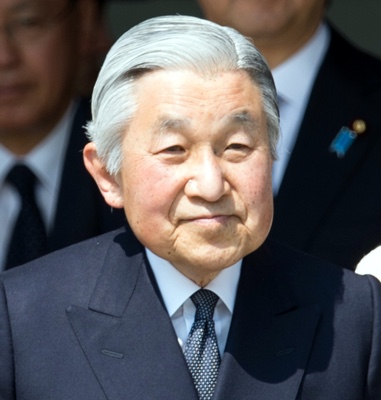While Other Governments Are Facing Populist Revolts, Japan Is Preparing for an Imperial Succession

Emperor Akihito of Japan
The Japanese government is preparing for a rare event, an imperial eclipse, an emperor’s abdication and ascension. April 30, 2019, is the date set for the abdication of Emperor Akihito, clearing the way for his eldest son, Crown Prince Naruhito, to become the 126th occupant of the Chrysanthemum Throne.
Akihito, who turns 84 on December 23, has had heart surgery and treatment for prostate cancer. He highlighted his desire to step down last year, saying that age might make it hard to fulfill his duties.
Since the Meiji Restoration of 1868, when the shogunate collapsed and the emperor was plucked from relative political obscurity in Kyoto to reside in Tokyo, there have only been four emperors.
The succession, when it comes, will provide Japan with symbols of its past, though some will try to hijack them as markers for the future. The event can be expected to be exploited by politicians as the country reconsiders war-renouncing Article 9 in the constitution, which prevents the Japanese army from being deployed in battle.
The Liberal Democratic Party, which has been in power for all but a handful of the last 60 years, proposed scrapping the second paragraph of Article 9, which reads: “land, sea, and air forces, as well as other war potential, will never be maintained. The right of belligerency of the state will not be recognized.”
Under the government’s new proposal, the second paragraph of Article 9 would remain intact, but include new text legitimizing the existence of the Self-Defense Forces, which were established in 1954 in contradiction to Article 9.
Akihito’s retirement and the engagement of his granddaughter Princess Mako to a commoner, have reignited debate about the shortage of male heirs and a possible succession crisis in an imperial line some claim stretches back 2,600 years.
The prime minister, Shinzo Abe, has also rejected moves to include a clause allowing princesses to establish their own branches within the imperial family after they marry commoners. This would give their sons the right to become emperors.
It gets down to sheer numbers. Once Mako marries, the imperial family will have just just 18 members – 13 of whom are women – and only four heirs to the throne: 57-year-old Naruhito, his younger brother Akishino and his son, 10-year-old prince Hisahito, and the emperor’s 81-year-old brother, prince Masahito.
If Hisahito fails to have any sons, the imperial line would be endangered.
The Imperial House Council will hold a meeting on Dec. 1 to present proposals for Abe to consider regarding the abdication date from the heads of both Diet chambers as well as Imperial family members.
The government intends to seek cabinet approval as early as Dec. 8 for a government ordinance to officially set the abdication date.
A law enabling the emperor to abdicate specifies that the abdication should take place within three years from the law’s promulgation, which was in June this year.
Japan's royal family claims lineage back to the first emperor, Jimmu (about 650 BC), and is the world's oldest hereditary monarchy. Despite this long lineage, succession was never a problem, due mainly to the system of concubinage, which was only abolished in 1926, the year Akihito's father, Hirohito, became emperor.
In 1945, the Americans realized that this system had produced a number of possible competing claimants to the throne. This fear resulted in the Imperial Household Law, introduced in 1948, which limited the succession to male descendants of the emperor, Hirohito.
For many Japanese, the only succession they recall was Akihito's in 1989. The country was severely disrupted in the months before the death of Hirohito. Cabinet ministers cancelled meetings overseas, television programs were curtailed, festivities called off and the media portrayed the situation in reverential tones.
Japan in 1989 was a far different place. When Hirohito died, mourning for his passing aside, there was an air of unbridled optimism, the foundation of which lay in the country's phenomenal economic power. From the debris of war, the country had rebuilt itself, joined the economic superpowers and was challenging the US for pre-eminence.
Today, the country is frustrated at its lost economic opportunities and troubled that the post-bubble remedy has seemed so elusive to its leaders. And the rise of China has led to a sense of vulnerability that was missing in 1989.
The imperial family, the only institution in Japan not beset by scandal, has been portrayed as the last bastion of “good, traditional values.” In any country with a monarchy, succession is a time for rejoicing, to reaffirm the country's values and to give the people a sense of identity and hope for the future. But there is a dark side to Japan's succession.
Rightists groups will portray the Shinto rituals, especially the rite of enthronement where the new emperor is in symbolic communication with deities, as evidence of the “real Japan.” This will be taking place against a backdrop of Japan changing the status of its military and that will alarm some its neighbors.